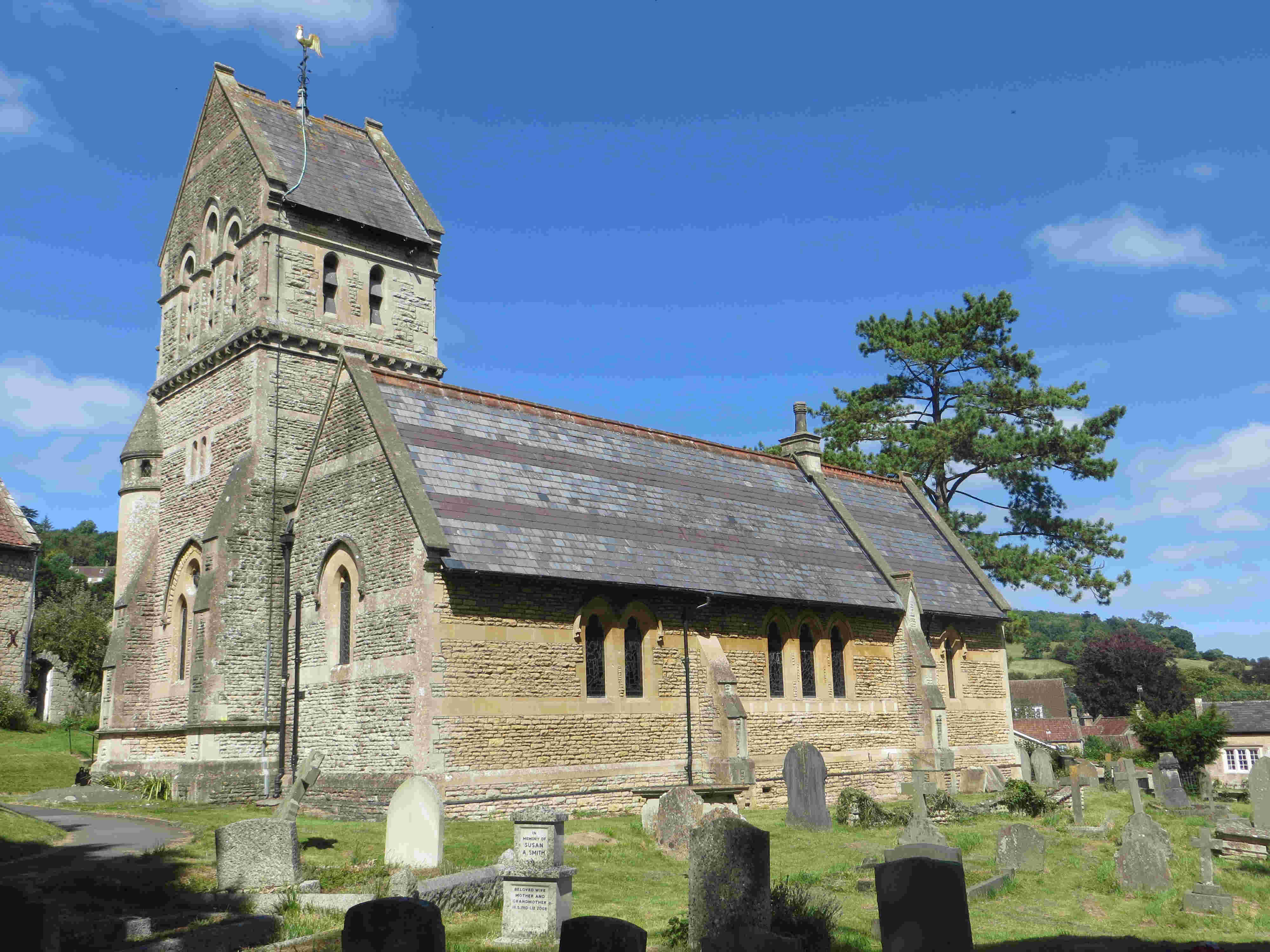
St Michael's church
|
The church of St Michael has undergone a series of transformations from the original small Norman one, its replacement in 1814 with a larger structure, followed by a new church in 1865 and the addition of a northern aisle in 1881.
In February 1864 there was an advertisement inviting builders to tender for the ‘altering and enlarging the church at Monkton Combe, near Bath’. In the Bath Chronicle of Thu 5 May 1864 a notice (p.8) outlined the plans to increase the number of sittings from 95 to 250 by enlarging the existing church, rebuilding the tower and adding a new aisle. This also specified that the cost would be £1000 and gave a list of subscriptions amounting to over £400 that had already been received.
During 1865 the Bath Chronicle had various advertisements for events for the ‘Monkton Combe Church Building Fund’ including bazaars and lectures. From the Bath Chronicle of Thu 29 Jun 1865 p7:
MONKTON COMBE.—The church in this village having been found too small for the accommodation of the increased and increasing number of worshippers, the incumbent, the Rev. F. Pocock, acting upon the advice of Mr. Giles, the eminent architect determined to take down the old fabric and to build an entirely new church, the expense being defrayed by voluntary subscriptions, The incumbent’s stipend does not exceed £75 per annum, but so kindly and generously has he been supported that a large portion of the required funds required has been already raised; still there remains a debt of £350 to be paid off before the incumbent will be relieved from the heavy responsibility he has so nobly took upon himself. The church, we see, is to be opened on Tuesday, 4th July, when sermons will be preached by Ven. The Archdeacon of Bath, and by the Right Rev. D. Anderson, late Bishop of Rupert’s Land. After each sermon there will be a collection towards defraying the debt, and we earnestly hope that there will be liberal contributions from all who wish God speed to a faithful and zealous labourer in his Master’s vineyard.
The church served both Monkton Combe and Combe Down. Holy Trinity Church, Combe Down, dates from 1832-5 but does not have its own graveyard. In the burial registers the abodes include ‘Combe’, ‘Monkton Combe’ and ‘Combe Down’ with a variety of spellings. It is only in the 1840s that designation of the abodes settles down to be mainly either ‘Monkton Combe’ or ‘Combe Down’.
Very few ancient memorials exist. It is reported that the part of the graveyard to the south of the church was reused. There are only a few memorials for burials before 1850, the oldest ones being a large memorial from 1812 and a slab for someone buried in 1829.
The memorial on one grave has an enigmatic reference to ‘Senor Don Fink of Valencia in the Kingdom of Spain’ who had erected the stone for his parents-in-law. Henry Fink, an engineer from Bristol, had gone to Valencia to drive the first steam train there and subsequently set up various businesses. There is also large altar tomb on the northern side of the church for members of the Shute and Rothery families, who drowned in a boating accident at Chepstow in 1812.
The church is now part of a joint benefice with Holy Trinity, Combe Down and St James, Southstoke.